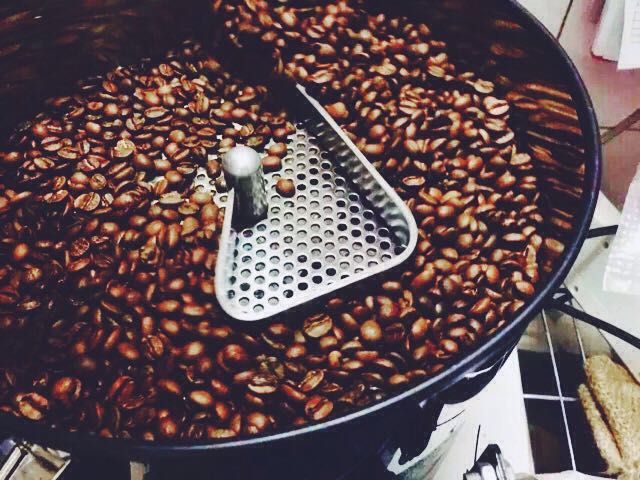Full-bodied Costa Rican coffee flavor and taste introduction of fine coffee varieties in manor producing area
Costa Rica's terrain is flat on the coast and isolated by rugged mountains in the middle. It declared an exclusive economic zone of 200 nautical miles and a territorial sea of 12 nautical miles. The climate is tropical and subtropical, and partly neotropical. Costa Rica's climatic conditions are completely different, completely reversing the classification of the four seasons of the year. There are only two seasons here. April to December is the rainy season, with much rainfall. The dry season from the end of December to April of the following year is also called summer. The annual average temperature of San Jose, the capital, ranges from 15 ° C to 26 ° C; the temperature in coastal areas is relatively high, with an average night temperature of 21 ° C and a daily average temperature of 30 ° C in the Caribbean. Natural resources include iron, manganese, mercury, bauxite, gold, silver, etc., of which bauxite, iron and coal reserves amount to 150 million tons, 400 million tons and 50 million tons respectively. Recent developments are mainly distributed in the central golden belt region of the Tilaran Cordillera in the northwest. Calcium carbonate ore is distributed in the northwest and has a higher grade. The purity of calcium carbonate extracted from limestone can reach 99.5%. Costa Rica attaches great importance to environmental protection and the exploitation of natural resources is severely restricted. The current Constitution entered into force on 7 November 1949. The Constitution stipulates that the State shall have a republican system of power with the separation of legislative, judicial and executive powers. The Office of the Comptroller-General and the Supreme Electoral Court are independent bodies. The president is the head of state and government and can stand for re-election every other term; the president and vice president are elected directly for a term of four years; in the absence of the president, the first vice president, the second vice president and the speaker take over in turn. In April 2003, Costa Rica amended the Constitution again, allowing the President to be re-elected for consecutive terms. Costa Rica has 21 ministries, namely: Ministry of Foreign Affairs and Religious Affairs, Ministry of the Presidency, Ministry of the Interior, Police and Public Security; Ministry of Finance, Ministry of Foreign Trade, Ministry of Economy, Industry and Commerce; Ministry of Planning and Economic Policy; Ministry of Health; Ministry of Science and Technology; Ministry of Decentralization and Local Development; Ministry of Social Welfare and Family; Ministry of Public Works and Transportation; Ministry of Public Education; Ministry of Housing and Settlement; Ministry of Environment and Energy; Ministry of Labour and social protection; Ministry of Culture and Youth; Ministry of Agriculture and Livestock; Ministry of Justice and Peace; Ministry of Sports; Ministry of Tourism
Costa Rica's coffee industry, formerly controlled by the Instituto del Café de Costa Rica (ICAFE), has been taken over by the Official Coffee Council (Oficin del Café). Among coffee exports, those deemed substandard are colored with blue vegetable dye before being recycled for domestic sale. Coffee consumed domestically (dyed blue or undyed) accounts for about 10% of total production, and local coffee consumption per capita is twice that of Italy or the United States.
Brazil, a coffee producer, accounts for one-third of global consumption of all grades and varieties of coffee and occupies a place in the global coffee market. Although Costa Rica faces many times more natural disasters than other regions, its arable area is enough to make up for it.
There are many kinds of coffee here, but its industrial policy is large and cheap, so there are not many excellent coffee, but it is a good choice to mix other coffees.
One of the most famous is Mountain Costa Coffee, which tastes mellow and neutral. It can be boiled directly or mixed with other kinds of coffee beans. It is also a good choice.
Other types of Brazilian coffee, such as Rio, Parana, etc., can be produced in large quantities without too much care. Although the taste is rough, it is a kind of inexpensive coffee. Due to its distribution in all parts of the country, the solid quality varies, and there are its own standards (NO.2~NO.8 according to the number of impurities, NO.13~NO.19 according to the size of beans, divided into six grades according to taste). Almost all Arabica varieties are of good quality and stable prices, the most famous being Costa Rica, which has been a necessity for blended coffee since ancient times and is familiar to the public.
Excellent Costa Rican coffee is known as "extra hard beans" and can grow at altitudes above 1500 meters. Altitude has always been a problem for coffee growers. The higher the altitude, the better the beans, not only because higher altitudes increase the acidity of the beans and thus enhance the flavor, but also because the lower night temperatures at higher altitudes can slow down the growth of trees and thus enhance the flavor of the beans. In addition, due to the high altitude drop caused by sufficient rainfall, coffee tree growth is very favorable. The negative effect, however, is to increase the additional cost of transportation, which may well make coffee production unprofitable. Costa Rican coffee has adopted new techniques to increase efficiency, including using "electric eyes" to select beans and identify beans of irregular size.

Important Notice :
前街咖啡 FrontStreet Coffee has moved to new addredd:
FrontStreet Coffee Address: 315,Donghua East Road,GuangZhou
Tel:020 38364473
- Prev

Introduction to the characteristics of Hawaiian Coffee Kona Coffee Flavor Manor
The Hawaiian islands are formed by volcanic eruptions, including 8 large islands and 124 small islands, stretching for 2450 kilometers, forming a crescent-shaped island chain. Hawaii is the largest island, with two active volcanoes. The climate is mild and pleasant all the year round, the precipitation is greatly affected by the topography, there are great differences in different places, and the forest coverage rate is nearly 50%. Honshu is made up of nineteen major islands and coral reefs, located in the middle
- Next

Taste characteristics of large particle Ecuadorian coffee varieties introduction to the flavor of boutique coffee beans in the manor
The Rabe Coffee Tree was first introduced to Ecuador in 1952 and its coffee is of good quality, especially the coffee harvested in early June. Ecuadorian coffee beans can be divided into two varieties: Galapagos and Gigante, both of which have the characteristics of large granules and heavy weight. Ecuadorian coffee can be divided into first class (No.1) and super excellent (Extra Superior) according to quality.
Related
- Detailed explanation of Jadeite planting Land in Panamanian Jadeite Manor introduction to the grading system of Jadeite competitive bidding, Red bid, Green bid and Rose Summer
- Story of Coffee planting in Brenka region of Costa Rica Stonehenge Manor anaerobic heavy honey treatment of flavor mouth
- What's on the barrel of Blue Mountain Coffee beans?
- Can American coffee also pull flowers? How to use hot American style to pull out a good-looking pattern?
- Can you make a cold extract with coffee beans? What is the right proportion for cold-extracted coffee formula?
- Indonesian PWN Gold Mandrine Coffee Origin Features Flavor How to Chong? Mandolin coffee is American.
- A brief introduction to the flavor characteristics of Brazilian yellow bourbon coffee beans
- What is the effect of different water quality on the flavor of cold-extracted coffee? What kind of water is best for brewing coffee?
- Why do you think of Rose Summer whenever you mention Panamanian coffee?
- Introduction to the characteristics of authentic blue mountain coffee bean producing areas? What is the CIB Coffee Authority in Jamaica?

